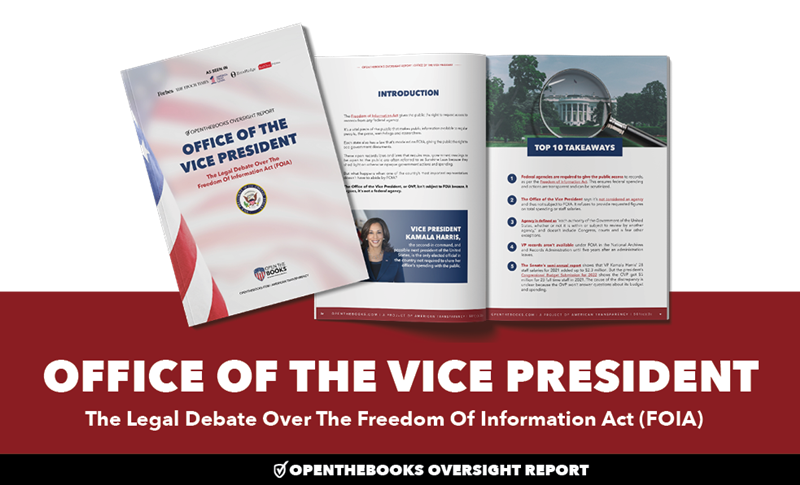

TOP 10 TAKEAWAYS
1. Federal agencies are required to give the public access to records, as per the Freedom of Information Act. This ensures federal spending and actions are transparent and can be scrutinized.
2. The Office of the Vice President says it’s not considered an agency and thus not subject to FOIA. It refuses to provide requested figures on total spending or staff salaries.
3. Agency is defined as “each authority of the Government of the United States, whether or not it is within or subject to review by another agency,” and doesn’t include Congress, courts and a few other exceptions.
4. VP records aren’t available under FOIA in the National Archives and Records Administration until five years after an administration leaves.
5. The Senate’s semi-annual report shows that VP Kamala Harris’ 28 staff salaries for 2021 added up to $2.3 million. But the president’s Congressional Budget Submission for 2022 shows the OVP got $5 million for 23 full time staff in 2021. The cause of the discrepancy is unclear because the OVP won’t answer questions about its budget and spending.
6. The OVP requested more than $6 million for 2022 for 27 full time staff, a more than $1 million increase from 2021 funding.
7. Harris named Tina Flournoy as her chief of staff in December 2020, and has been criticized for her rough management style and what has been reported as dysfunction and frustration in Harris’ office.
8. Symone D. Sanders, Harris senior advisor/chief spokesperson, initially defended Flournoy but became one of many to leave her high-profile job there at the end of 2021.
9. Sanders left two weeks after communications director Ashley Etienne resigned, which renewed speculation of chaos and dysfunction within the vice-president’s office.
10. Transparency in other federal agencies has led to OpenTheBooks. com being able to quantify and qualify spending and staff salaries in our report “Mapping The Swamp: A Study of the Administrative State (FY2020)." It details $217 billion spent on 2.8 million federal employees — a number that jumps to $292 billion when adjusted for inflation and assuming a 30 percent cost of benefits.